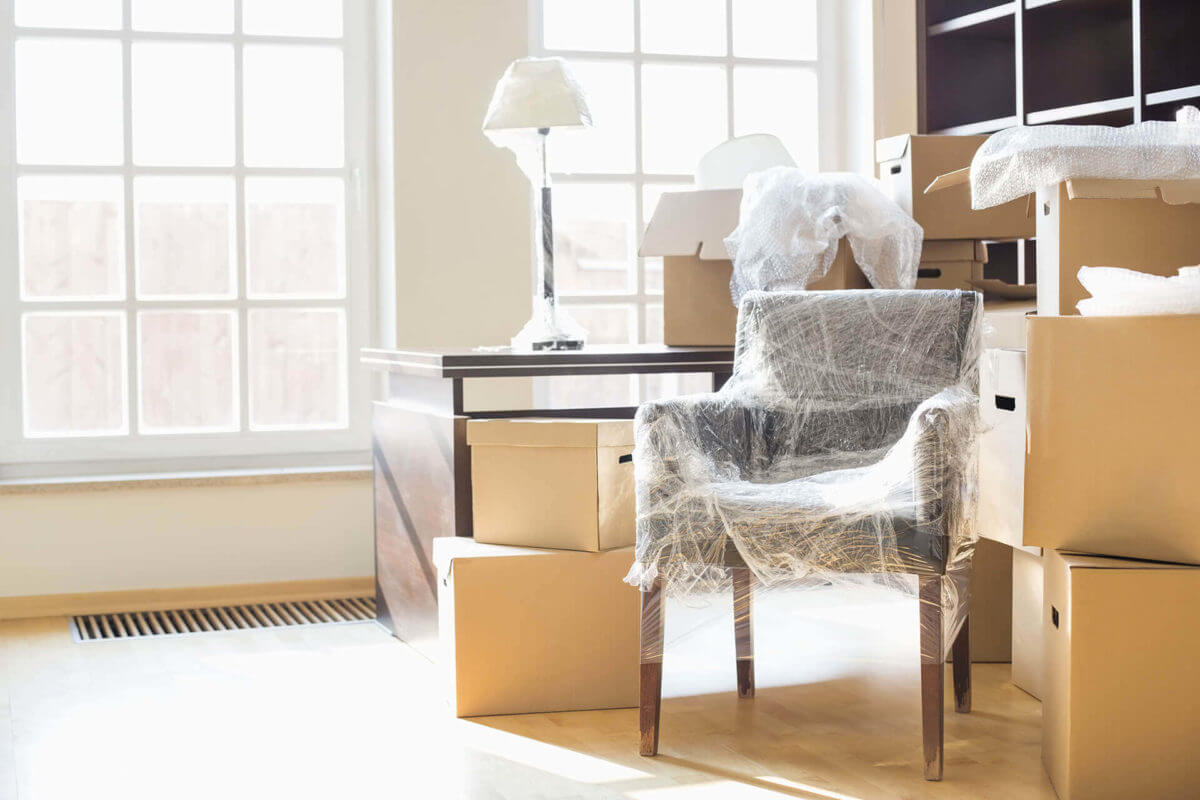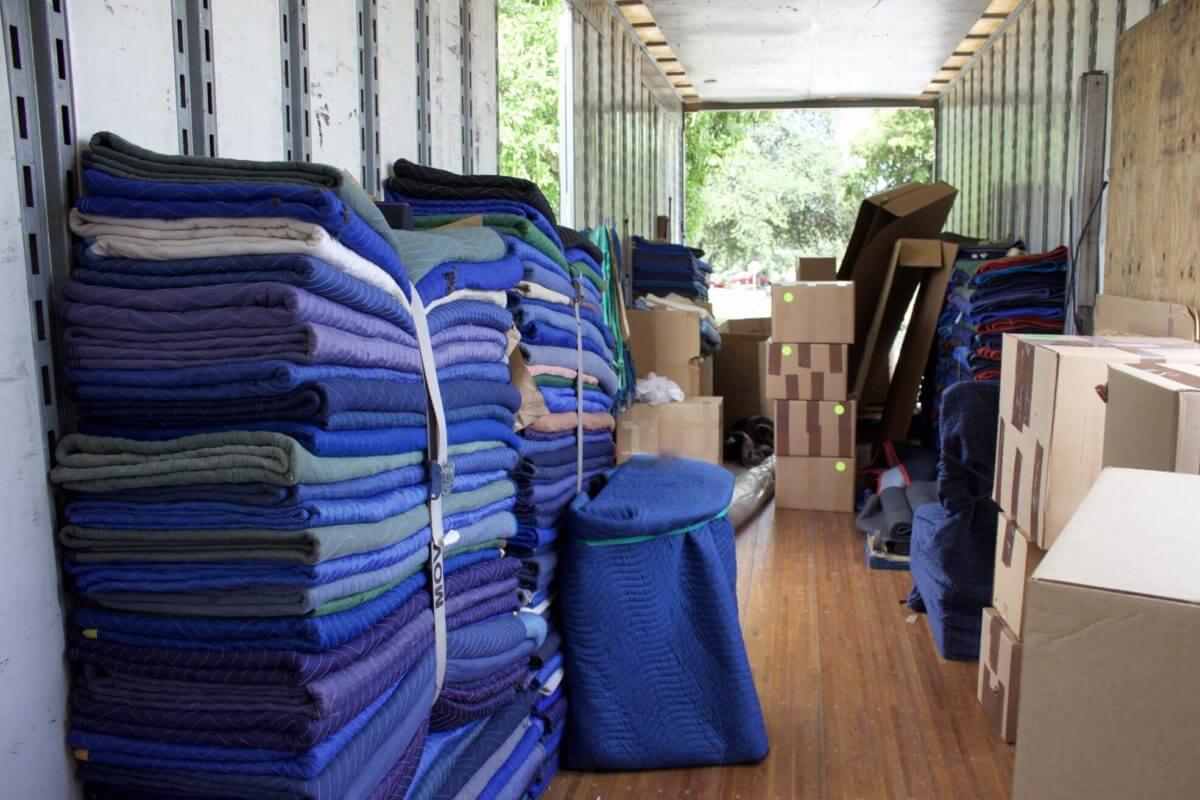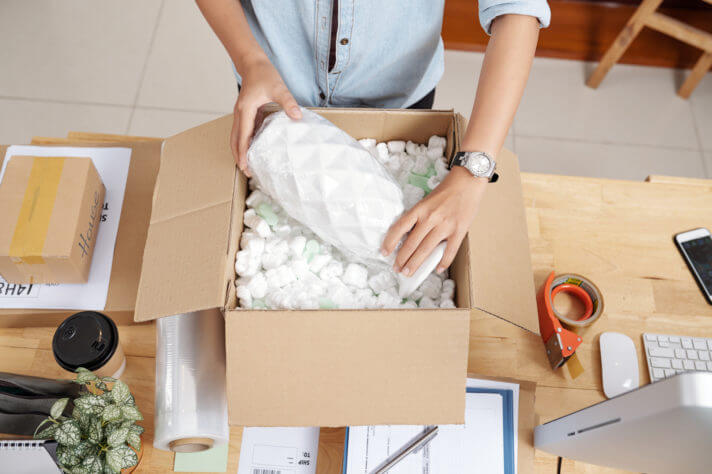When preparing for a move with long-distance movers, ensuring your furnishing is well-protected is crucial. So, what do movers use to wrap furniture? This guide explains the best materials and methods professionals from our Cross Country Moving Company use to safeguard your furniture. Learn how to keep these belongings safe and secure throughout the moving process.
How do professional movers wrap furnishing for relocation? Let's find out! What Do Movers Use to Wrap Furniture?
Cross-country movers use a variety of packaging materials to pack and protect furnishing during transit. Key materials include plastic wrap, moving blankets, shrink wrap, packaging paper, and bubble wrap, perfect for protecting fragile items.
They ensure furniture remains undamaged when shipping to a new state. Professional movers are skilled in using these materials efficiently, keeping your valuable belongings safe and secure throughout the relocation process – without much relocation stress.
Plastic Wrap – The Versatile Protector for Your Furniture
This is a go-to material for relocating to a new home due to its versatility and effectiveness. The clear film clings tightly to objects, creating a secure layer of protection. It’s commonly used to prevent scratches during shipping in a relocation truck. Its flexibility makes it ideal for wrapping oddly shaped items, ensuring they stay intact throughout the relocation process.
Uses of Plastic Wrap in Relocating
Plastic wrapping can be used in various ways to protect your belongings during a move. For upholstered items, such as sofas and chairs, plastic wrapping keeps fabric clean and prevents tears. It’s also effective for bundling and securing smaller pieces together, like chair legs or bed frames, ensuring they don’t get lost or damaged.
Movers often use this packaging material to keep drawers and cabinet doors shut, eliminating the need for extra tape. Furthermore, it’s ideal for wrapping delicate items like artwork and can even be used to pack mirrors, providing a tight seal that prevents shifting and potential breakage during transport.
The average life expectancy of a sofa is 2958 days, which is roughly 8 years
Advantages of Plastic Wrapping
The advantages of using plastic wrapping are numerous. Firstly, it offers excellent protection against dust, dirt, and moisture, which can be particularly beneficial during long-distance shipping. Its adhesive properties mean it clings tightly to furniture, providing a secure wrap without the need for tape or additional fasteners.
Plastic wrapping is also transparent, allowing movers to see the item underneath without unwrapping it, which can be useful for labeling and identifying pieces. Additionally, this will allow you to see what you’re unwrapping when you start unpacking after relocation.
Do movers wrap your furniture in plastic? That's one of the most used supplies Moving Blankets – Cushioning Your Furniture for the Long Haul
Moving blankets are a staple in the relocation industry, known for their durability and cushioning properties. These thick, padded blankets are specifically designed to protect furniture and other large items from scratches, dents, and other damage during transport. They are made from heavy-duty materials, providing a robust layer of protection against bumps and vibrations that occur on the road.
How Blankets Provide Extra Padding
The extra padding provided by moving blankets comes from their multi-layered construction. Typically, they consist of a combination of cotton, polyester, and other synthetic fibers, quilted together to form a thick, cushioned barrier. This padding absorbs shocks and impacts, protecting your furniture from damage.
Additionally, blankets help prevent items from shifting and rubbing against each other, which can cause scratches and scuffs. By wrapping your furniture in blankets, you create a protective buffer that keeps your belongings safe during the journey to their new home.
The Best Practices for Using Moving Blankets
To maximize the benefits of moving blankets, it’s important to use them correctly. Begin by laying the blanket flat on the floor and placing the furnishing in the center. Wrap the blanket around the item, ensuring it covers all sides completely. Secure the blanket with tape or straps to keep it in place and ensure safe relocating. For larger items, use multiple blankets to provide full coverage.
Blankets provide excellent cushioning, especially for long-distance shipping Shrink Wrap – Securing Your Furniture for Transit
Shrink wrap is an invaluable tool for movers, providing a secure, tight seal around the furniture to protect it during transit and ensure efficient relocation. This strong film is heated to conform snugly to the contours of the item, so it stays in place and resists shifting.
Benefits of Shrink Wrapping When Moving Cross-Country
The benefits of using shrink wrapping for relocating are numerous. It offers a high level of protection against environmental elements, ensuring that your furniture remains clean and dry throughout the journey. Shrink wrap also provides a tight seal that holds protective padding, such as blankets, in place. This helps to prevent scratches and other damage.
How to Apply Shrink Wrap Effectively
To apply the shrink effectively, start by wrapping the furniture with a protective layer, like moving blankets, for added cushioning. Next, use heat to shrink the material around the item, starting from the top and working your way down. Ensure the wrap is tight and smooth, with no loose areas. Secure the wrapping at the bottom with tape if needed. For best results, apply multiple layers, especially around edges and corners, which are more prone to damage.
Packing Paper – A Simple Yet Effective Wrapping Material
Packing paper is a straightforward yet highly effective material for protecting furniture during a move. Made from durable, unprinted material, it provides a clean, flexible layer that conforms to the shape of your items. Packing paper is ideal for wrapping delicate surfaces, offering protection against scratches, chips, and other damage. Its affordability and versatility make it a popular choice among professional movers and DIY packers alike.
When to Use Packing Paper
Packing paper is best used for smaller, delicate items and surfaces prone to scratching, such as glass tabletops, mirrors, and wooden furniture. It is also excellent for packing electronics and wrapping kitchen items and decorations. Apart from its use in packaging furniture, packing paper can be great for filling empty spaces in boxes, preventing items from shifting during transit. For larger items, it serves as an initial protective layer before applying more robust materials like bubble wrap or blankets.
Tips for Wrapping Furniture With Packing Paper
To effectively use packing paper, start by laying out sheets of paper on a flat surface. Place an item in the center and wrap it securely, ensuring all surfaces are covered. For extra protection, use multiple layers of paper. When wrapping, tuck the edges and corners neatly to avoid loose ends. Secure the paper with tape to keep it in place.
Paper is best used for smaller items that are fragile or prone to scratches Bubble Wrap – The Ultimate Protection for Fragile Items
Bubble wrapping is renowned for its superior protection of fragile items during a move. Its unique design, featuring air-filled bubbles, provides cushioning that absorbs shocks and prevents damage. Its ability to prevent things from breaking makes it an indispensable material for safeguarding delicate furniture.
Bubble wrap’s flexibility allows it to conform to various shapes and sizes, ensuring comprehensive coverage and protection. Whether it’s glass tabletops, mirrors, or delicate wooden furniture, bubbles are often the go-to choice for movers seeking to prevent damage.
Why Bubble Wrap Is Essential
Bubble wrap is essential for several reasons. Its primary function is to provide a protective barrier that absorbs impact and prevents scratches, dents, and breakage. The air-filled bubbles act as a cushion, distributing pressure evenly and reducing the risk of damage.
Additionally, bubble wrapping is lightweight, adding minimal weight to your load while offering maximum protection. Its transparent nature also allows movers to identify items without unwrapping them, facilitating easy organization and handling. The versatility of bubbles makes them suitable for various items, from small, fragile pieces to larger furniture.
Techniques for Using Bubble Wrap on Furniture
To use bubble wrapping effectively, start by laying out a large sheet on a flat surface. Place the furniture item in the center and cover it tightly, ensuring that the bubbles face inward for maximum cushioning. For larger items, use multiple sheets of bubbles to cover all surfaces thoroughly.
Secure the wrappings with packing tape, paying extra attention to corners and edges, which are more prone to damage. For added protection, consider double-wrapping – especially fragile pieces. Avoid over-tightening, as this can cause the bubbles to burst, reducing their effectiveness. Properly labeled bubble-wrapped furniture ensures easy identification and safer handling during your move.
Bubble wrapping is an essential part of every relocation process The Benefits of Hiring Professional Movers
Hiring movers from a reliable long-distance moving company can significantly ease the stress and complexity of relocating. No matter where you’re relocating, cross-country moving services bring expertise, efficiency, and peace of mind to the process. Reputable cross-country moving companies offer a range of benefits that can make your move smoother and more organized. Here are some key advantages of enlisting the help of professional movers like the Cross Country Moving Company:
- Expert packing and handling – Professional movers are trained to provide the best packing assistance to protect your belongings, ensuring everything is securely wrapped and handled with care.
- Time-saving efficiency – With experience and a systematic approach, movers can pack and transport your items much faster than you could on your own, saving you valuable time.
- Safety and reduced risk – Movers have the right equipment and skills to lift and move heavy or awkward items safely, reducing the risk of injury or damage.
- Insurance coverage – Professional moving companies typically offer insurance options, providing financial protection in case of accidental damage or loss during the move.
- Stress reduction – By handling the logistics and heavy lifting, movers allow you to focus on other important aspects of your move, reducing overall anxiety about relocating.
- Customized long-distance moving services – Many relocation companies offer additional services such as car shipping and storage solutions, allowing you to tailor the move to your specific needs and preferences.
Ensure a Safe Move – Contact Us for Expert Assistance
When planning a long-distance move, booking a cross-country moving service ensures your belongings are safe and secure. Our team of experienced professionals provides expert packing, reliable transportation, and additional services such as auto transport and storage solutions.
Cross Country Moving Company prioritizes the safety of your furniture and valuables, making the relocation process smooth and stress-free. Don’t leave your move to chance – trust the experts for a seamless experience. Contact us today to discuss your moving needs and receive a free quote. Let us help you embark on your new journey with confidence!












